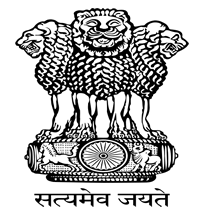India: Government
Key Figures
- Chief of State:
- President Droupadi Murmu
- Head of Government:
- Prime Minister Narendra Modi
Overview
- Government Name:
- Republic of India
- Constitution:
- Adopted: 1950; Lays down the framework for fundamental political principles, establishes structure, and sets out fundamental rights.
- Government Type:
- Federal Parliamentary Republic

Index of Economic Freedom
Country Risk Rating
Government Branches
| Main Powers | Election Process | Election Cycle 1 | |
|---|---|---|---|
| Executive | The president serves as commander-in-chief, can grant pardon or reduce the sentence of a convicted person, and appoints various governors and other positions. |
The president is indirectly elected by an electoral college. |
5 years |
| Judicial | Enforces fundamental rights; issues directions, orders, or writs; and may direct the transfer of any civil or criminal case. |
Appointed by the president. |
Life appointment until age 65 |
| Legislative | Lok Sabha and Rajya Sabha are the main legislative bodies of government that are responsible for executing the legislative tasks of the government. |
The Rajya Sabha has 245 seats, with 233 members who are indirectly elected by the state legislatures. The Lok Sabha has 543 members who are elected by plurality vote in single-member constituencies and 2 members who are appointed by the president. |
Lok Sabha: 5 years; Rajya Sabha: 6 years |
Regional Trade Blocs
International Organization Participation [2]
Environmental Agreements [3]
Tax Information [2]
- Tax Authority:
- Central and State Governments
- Tax Name:
- VAT and CST
Sources:
- ElectionGuide http://www.electionguide.org/
- EY, http://www.ey.com
- CIA World Factbook, https://www.cia.gov/the-world-factbook/
- U.S. Bilateral Relations Fact Sheets http://www.state.gov/r/pa/ei/bgn/


